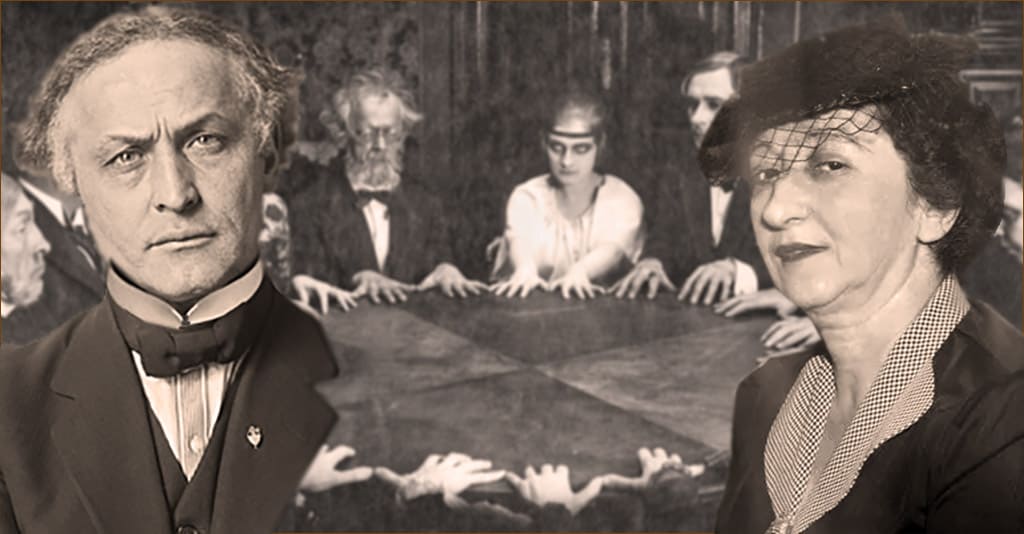
When it came to spiritualists and séances, Rose Mackenberg, a savvy, no-nonsense Brooklyn private eye, once said, “I smell a rat before I smell the incense.” In the early 20th century, she became a star investigator for escape artist and magician Harry Houdini, who spent the last portion of his own career debunking psychics and séances.
Spiritualism in the 19th and Early 20th Centuries
Spiritualism, the belief that the dead can communicate with the living, peaked after America’s devastating losses in the Civil War, World War I and the 1918 Spanish flu pandemic. Bridging that ethereal gap were thousands of phony psychics and self-described seers who, in reality, saw no further than the pocketbooks of the gullible and the grieving. Holding séances in darkened rooms, they delivered messages from the dead, touting their presence with parlor tricks like spirit pictures and levitation — not to mention producing something called ectoplasm that issued when least expected from their ears, noses or mouths.
Well-known adherents included Sir Arthur Conan Doyle, President and Mary Todd Lincoln, and French physicist Pierre Curie. Magician Harry Houdini attended his first séance in 1891, hoping to hear from his dead parents. He and his wife even created a spiritualist act when they found themselves in financial straits. But Houdini dissolved the act as he saw people’s grief and vulnerability, believing they were in touch with their dearly beloved.
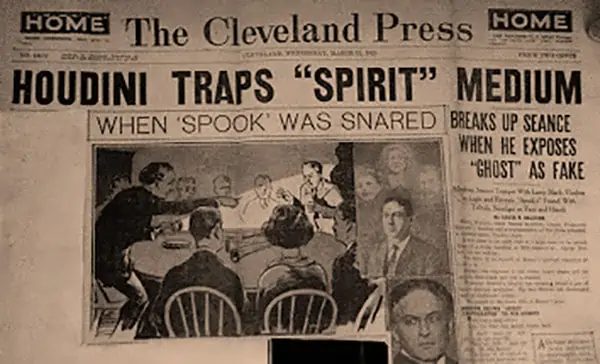
Harry Houdini Takes on Ghost Racketeers
Toward the end of his life, Houdini focused on escapes, magic and the debunking of mediums. In 1924 he published A Magician Among the Spirits, exposing some of the effects mediums employed. To that end, he employed a small army of undercover agents he called “my own secret service.” Among them, Rose Mackenberg was the best.
Born in Brooklyn in 1892 to Russian immigrants, she was working as a legal stenographer and private detective when a client asked her to look into a medium who advised he invest in a stock that proved worthless. She consulted Houdini, already known for exposing psychic swindlers, who advised her on how to uncover the fraud, then recruited her to his crusade. When Houdini toured in 1925-26, Mackenberg visited each city a couple weeks ahead of him, going undercover to suss out local spiritualists.
An 800-Year-Old Hindu Spirit Guide
One of them was an Indianapolis medium named Charles Gunsolas, claiming to be one of America’s leading spiritualists. Posing as a bereaved mother, Mackenberg told him her baby had recently died and she was desperate to check on the baby in the afterlife. Gunsolas, claiming to work through an 800-year-old Hindu spirit guide and a “spirit wife” named Ella, told Mackenberg that for $25 he could teach her to access the afterlife by gazing into a bowl of water … but it would be so much easier to make contact with the Hindu spirit guide if she took off her clothes. Mackenberg declined.
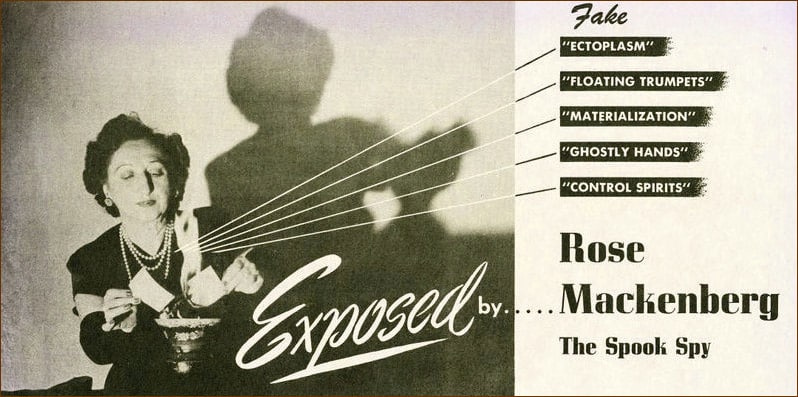
Instead, she reported back to Houdini before his show in Indianapolis, where Gunsolas, having written angry letters to the magician after reading his book, would be in attendance. Houdini, telling of Mackenberg’s experience, called him out from the stage. It didn’t take long for Gunsolas to flee the theater to the jeers and catcalls of the audience.
Never Married But 1,000 Husbands?
Rose Mackenberg only worked for Houdini for two years, investigating 300+ psychics and seers in that brief time. Quick-witted, and a skeptic by nature, she was also a master of disguise, several of which she described in a 1929 newspaper article. There was the “rustic schoolteacher,” a “credulous servant girl,” and the “tipsy consultant,” each of whom came with a pseudonym she built on wordplay. The phrase “all is bunk” became Allicia Bunck, while the in-your-face “fraud” translated to Frances (or just the initial F) Raud. But two of her favorites were the grieving mother or bereft widow. In 1937, she told the St. Louis Post-Dispatch, “I never married. But I have received messages from 1,000 husbands and twice as many children” in the afterlife. “Invariably,” she continued, “they told me they were happy where they were, which was not entirely flattering to me.”
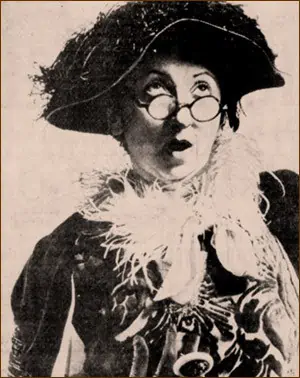
Because mediums were subject to prosecution if they posted and collected fees, they cloaked themselves in religious freedom, establishing Spiritualist churches complete with hymn-singing, liturgies and collecting “offerings.” In the line of duty, Mackenberg became ordained by so many Spiritualist churches her nickname in Houdini’s army was “The Rev.”
Rose Mackenberg Goes to Washington
But her most famous case came in 1926 as Congress debated the Copeland-Bloom bill, outlawing fortunetelling in Washington. Houdini, a star witness, shared the results of his investigations; Mackenberg testified about her visits to a well-known local medium named Jane Coates.
Coates had confided to her that the bill would never pass because her customers included four senators. Moreover, “table-tipping séances were being held in the White House with President Coolidge and his family.” Mackenberg later recalled how her testimony “touched off rockets and pinwheels and giant crackers of emotion as people began shouting, ‘That’s a lie!’ and ‘We never did such things!'” As for Coates, she denied the allegations in an interview with the New York Times, describing a hearing that “came near winding up in a free-for-all fist fight.” Ultimately, the bill did not pass, but the hearings, before being suddenly adjourned, sure made for entertaining press coverage.
Houdini and the Afterlife
Harry Houdini died unexpectedly in 1926, leaving Mackenberg to continue their work as she partnered with police departments, insurance companies and Better Business Bureaus. She lectured on how to spot phony psychics; wrote newspaper and magazine articles along with a yet-unpublished autobiography titled So You Want to Attend a Séance?
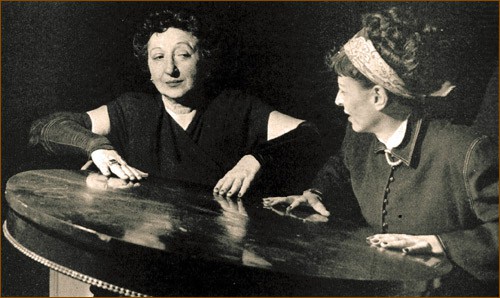
Despite a lifetime spent exposing “ghost racketeers,” Rose Mackenberg insisted she wasn’t exactly a nonbeliever. She was willing to believe in an afterlife; but having investigated more than 1,000 mediums, she had never seen proof of one. It’s said that prior to his death, Houdini gave more than 20 friends secret codes to attempt to communicate from beyond the grave, Mackenberg among them. As late as 1945, she reported “his message has not come through.”
Rose Mackenberg died in 1968 at the age of 75. For years, she had lived in the same apartment on Manhattan’s West 24th Street — an apartment she always kept well-lit because after years of attending séances she noted, “I get tired of dark rooms.”
Exploiting Grief for Financial Gain
In 1932, 30 million people a year fell prey to psychic hoaxes, with losses of $125 million. A study conducted in 2018 concluded psychic services in the U.S. had grown by 52% since 2005 in an industry now worth about $2.2 billion/year. Far from being a woo-woo fringe activity, Spiritualism has long been a powerful industry with vested interests.
Rose Mackenberg certainly never imagined today’s digital age, where psychic trolls make expert use of social media to learn personal details about their unsuspecting marks. But she was savvy enough to recognize trends in the Spiritualist trade. For instance, she knew fakers proliferated in unsettled, frightening times when Americans sought solace and reassurance.
Today, you, too, can be trained in the psychic arts with nothing more than a mouse click and a credit card. Pace yourself with courses in mediumship, clairvoyance, angel reading, mastering spirit guides and ghost hunting. Purchase only the courses you want, or save money with limited-time bundling offers, some of which even include a handy guide to launching your career in Spiritualism and marketing your psychic services.
